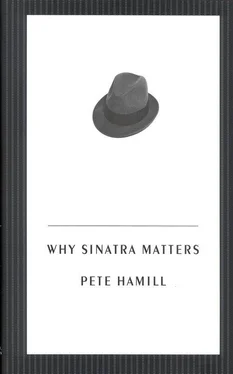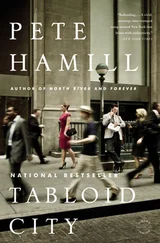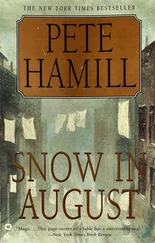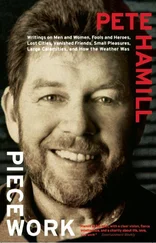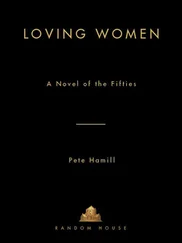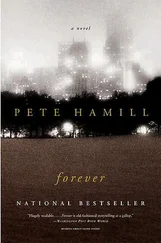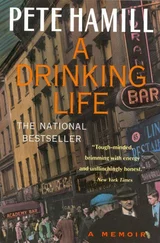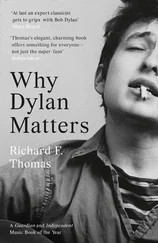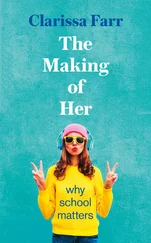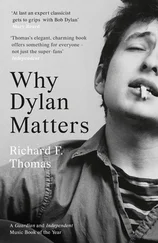“He could fight,” Sinatra said, years later. “He used to show me in the yard, you know, how to jab, how to throw a left hook, set your feet, that kind of thing. But he never hit me. Not once. Not ever. He was a gentle man. I think he was the kind of guy who never gave anyone any crap and walked away from most of the jerks he’d meet. But if you pushed him too far, watch out.”
There was nothing mediocre or reserved about Dolly Garavente. She was two years old when she came to America, and said later that she had no memories of Italy. With her blue eyes, strawberry blond hair, fair complexion, and, above all, her attitude , she appeared solidly American. Her confident, freewheeling style might have caused some uneasiness for her parents, epitomizing, as she did, la via nuova. But it made her a vivid force within that family and on the street. She managed to get through the eighth grade, a considerable accomplishment for a woman in that neighborhood in those years. She was infused with that “sensuous optimism” of the Genoese, but she was also tough, ambitious, capable of brassy vulgarity in two languages. She was very different from Martin Sinatra, and that was a surprise. In his great book The Italians, the writer Luigi Barzini writes:
“The private aims of southerners and northerners are, of course, more or less the same. The northerner, however, thinks that there is one practically sure way to achieve them: the acquisition of wealth, la richezza. Only wealth can, he believes, lastingly assure the defense and prosperity of the family. The southerner, on the other hand, knows that this can be done only with the acquisition of power, prestige, authority, fame.”
After Dolly Garavente married Marty Sinatra, she combined the characteristics of north and south in the same person, becoming an Italian and an American. That fusion helped shape the character of her only child. She brought to motherhood a special combination of rebelliousness and will, defying many of the codes of the old way. The marriage itself was fiercely opposed by the Garaventes. From the viewpoint of haughty Genoa, marrying a Sicilian was a step down. To marry a young man who was barely literate, who was a prizefighter, who had tattoos: that could not be allowed. At the same time, the Sinatras were not enthusiastic either. They had no use for people from Genoa. Such people were snobs. They thought too well of themselves. Martin should forget about this boisterous woman with the blond hair and marry a nice, quiet Sicilian girl. Both sets of parents forbade the marriage. The young people ignored them and the social codes to which they gave such immense value. This was, after all, America, not the Old Country. La via nuova would win out over la via vecchia. On February 14, 1913, Dolly and Martin eloped all the way to Jersey City and were married in City Hall. It was, of course, St. Valentine’s Day, the day on which Americans celebrated romance.
Romance meant little to the Sinatras and the Garaventes. Both families were outraged. A marriage in City Hall? That was no marriage. A marriage of two Catholics had to be performed by a priest! Ignoring the cold war between the Garaventes and the Sinatras, the young couple moved into a flat in an eight-family tenement at 415 Monroe Street in Hoboken. Dolly took a job in a candy shop. Marty scrambled to make a living and found work as a boilermaker in a shipyard. If necessary, they would be self-reliant; this was America. But the general unhappiness of the two families couldn’t go on. The following year, to calm their parents, Dolly and Marty got married again, this time by a priest. The second ceremony took place at home. Of course. But it was done more for the parents than for themselves, a bow to la via vecchia.
In an important way, Marty and Dolly — especially Dolly — were part of a bridge generation of Italian Americans, technically immigrants but confident enough as Americans to use their freedoms to discard old-fashioned conventions. If the narrative of their parents’ lives had been permanently interrupted when they boarded the ships for La America, their own narratives would be lived out in that same America. For them, America was not a destination; it was a place of beginnings.
“One thing about Dolly,” Sinatra said later. “She never looked back very much. She was alive today and looked forward to tomorrow. That was her. The thing about my grandparents was, they never really got over leaving the Old Country.”
In 1914 their personal drama overshadowed the distant dramas of the public world. Far away in Europe, in the town of Sarajevo on the last day of July, a Serbian nationalist assassinated Archduke Ferdinand and set off the horrors of the Great War. At first, in the streets of Hoboken’s Little Italy, there was interest, some anxiety, but no obvious alarm. Italy immediately declared its neutrality and would not be sucked into the charnel house until May of the following year. The young Sinatra couple didn’t care. By that spring of 1915, Dolly was pregnant with the couple’s first child.
The tale of that birth is essential to the almost mythic structure of the Sinatra saga. Frank Sinatra was born at home on Monroe Street on December 12, 1915. Dolly’s mother was present, but her skills as a midwife were simply not sophisticated enough to manage the breech birth. A doctor was summoned. He was nervous and panicky. He used forceps to extract the baby’s head, but his technique was so clumsy that the boy was permanently scarred on the face, neck, and ears. Scars were a minor concern; the immediate problem was death itself. In the midst of all the blood and pain, it first appeared that the baby was dead. He was immense — thirteen and a half pounds — but he was not breathing. Dolly’s mother, Rosa, moved faster than the despairing doctor. She took the baby in her hands and held him under the cold water tap in the sink. The shocked baby began to howl. Frank Sinatra was born.
IV. Later, he would have no memory of World War I, except its ending. “People started running around banging pots and pans and shouting and singing and then drinking and feasting in the streets,” he remembered. “It was one great big party.”
But the years of the war and its immediate aftermath would also affect Frank Sinatra and other Italian Americans. As it grew clearer that the United States would be sucked into the great European conflict, there was much debate about the potential loyalties of so many foreign-born citizens and residents. Every immigrant was suspect. Would the immigrants and their children fight for the United States in a European war? Would the Irish fight on the side of England against Germany? Would German Americans fight against Germany? Nativism revived, now equipped with crackpot theories about the genetic inferiority of southern Europeans, and Congress passed the first of many laws that would bring an end to immigration. D. W. Griffith’s The Birth of a Nation was released in the summer before Sinatra’s birth; it was a brilliant artistic triumph, establishing much of the syntax of the feature film, but its racism was vile and served as a powerful recruiting device for the Ku Klux Klan. The Klan in those days was not simply the enemy of blacks; it hated Jews and Catholics too, and all those immigrants from southern Europe.
The paranoid American imagination was inflamed by news of revolutions in Mexico, Ireland, and, most spooky of all, Russia. By October 1917 the Bolsheviks had taken power. In the United States, fear of communism and anarchism was added to the existing fear and contempt for the foreigner. Both communism and anarchism, after all, were “foreign” ideologies. Both were organized in secrecy and believed in the use of violence. Hadn’t an Italian anarchist from Paterson, New Jersey, assassinated King Umberto of Italy in 1900? Weren’t Italian anarchists causing labor unrest in silk factories and textile mills and allying themselves with the revolutionaries of the International Workers of the World? A new version of the “dual loyalty” debate was born; were these immigrants primarily loyal to the United States or to their un-American ideologies?
Читать дальше
